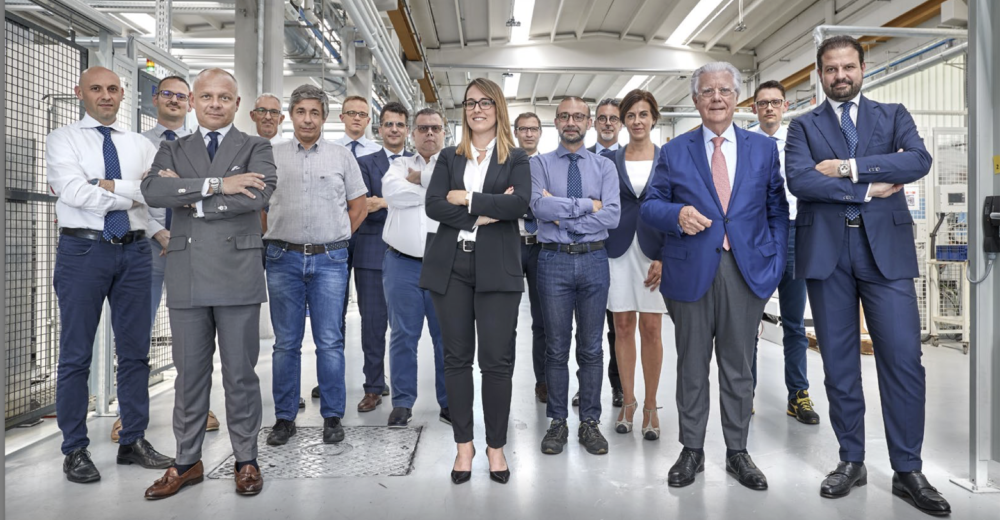Managing change in a company: 5 steps for successful implementation

Indice
- We all want change, but we don't really like it
- Before bringing people on board, let's get them off the boat that brought them there.
- Let's build psychological safety
- Let's maintain respect for the past
- Don't let the naysayers sabotage the novelty
- Let's guarantee intellectual honesty and gratitude
- One last tip
Introducing innovation means facing resistance and deep-rooted habits, and only a realistic and structured approach can guarantee a lasting impact.
Change management cannot be just an optimistic narrative about the benefits of the new but must start with the shared awareness that change is necessary.
Without concrete actions, organizations risk losing credibility in the eyes of employees, making change an empty promise.
We all want change, but we don’t really like it.
Changes in processes and organizations generate resistance, anxiety and uncertainties because any innovation is perceived as a threat to the status quo or as an additional workload: if the first threat is always true, the second tends not to be if anything is an emotional or cognitive load, of which we must understand and welcome the fatigue.
Most of us humans tend to prefer what we know and often see change as a risk rather than an opportunity. It is a biological, evolutionary fact, and we cannot do anything about it.
Below are 5 steps that promote a lasting impact of changes in the company.
Fase 1 – Phase 1 – Before bringing people on board, let them get off the boat they have been sailing on and that brings them there.
That boat could be as comfortable as a habit, as majestic as the glorious past, but it could also be called “Titanic”.
To overcome this resistance and bring people on board the project, we need to involve colleagues from the early stages of the project by communicating to them not so much the benefits of change, but its urgency.
“If we don’t change, we’ll crash”, is the essence of the message, conveyed with all the delicacies necessary to avoid turning the activation into distress.
People will have to understand well first, “why”, only after “what” and “how”, also because – often – in the initial phases of the project these details are not even very clear.
The beginning of the project is the time to define the problem (i.e. problem setting), not to solve it. These precautions must be explained to the sponsor because it will be the one to communicate the message and give the so-called “commitment”.
We must not focus on the solution but on the reason why.
Phase 2 – Psychological safety: create a serene space for questions and doubts so that people can directly face their fears.
Having communicated the urgency of change, we must welcome fear.
In the change we human beings are afraid of losing what is dearest to us and our little comforts.
For this reason, when we fine-tune the new process with interviews and coffee chatter it is necessary to investigate what our colleagues are afraid of losing.
Sometimes we will touch the depths of the human soul because it will emerge a world made of jealousy, envy, laziness: without stigmatizing or blaming these feelings (neither with verbal language nor with non-verbal), we reassures people that in the new process they will not lose their visibility, their role and will no longer struggle.
Also, this is the stage where we must value the past and show gratitude.
Beware of repeating stubbornly optimistic mantras “Everything will be fine, everything will be all right”: they are phrases that can only be said after having listened deeply to people and their doubts, otherwise to the ear of those people will sound like the “Blessed are you, who do not understand anything”.
None of us wants to be treated as a fool, we all want to be heard.
Phase 3 – Respect for the past but no alibi not to leave: the “Minimum New Feasible Process” must be tested on the field!
“We have always done so” sometimes is an alibi, sometimes it is an emotion that is called ‘nostalgia’ for a world that no longer exists and we would like to return because in that world we were younger and more beautiful.
It is a Pavlovian mechanism, an automatism well rooted in our biology and shaped by our experience.
As leaders of the transformation we must have the courage to force our hand and start with the new process: we must put down those 2-3 process changes for which we have a fair certainty about the improvement that they will bring. And then we must start with our new “Minimum New Feasible Process”.
Phase 4 – We do not allow the opposition to sabotage the novelty.
“Let’s keep the bar straight” on process innovations for as long as we need to test them and do not allow anyone to go back to the old ways of working because this would invalidate the experiment.
Then thanks to the data and feedback from people, we will adjust the process.
For example, In the new process, have we introduced a half-day cheek by jowl work routine between people from different functions? There are no exceptions, nobody can skip that commitment for the trial period, otherwise we will never be able to say if it worked or not.
What if someone skips it to follow other projects or other operations? At the first infringement you must enforce experimental discipline and immediately escalate on the hierarchy: not to “reproach” someone but to ensure that the responsible/ the person confirms the why of the innovation project and ensures its support in giving top priority.
Step 5 – We guarantee intellectual honesty and gratitude.
At the go-live of the new process we spoke of “discreet certainty”, not certainty. If the experiment has failed, it only means that the solution hypothesis is to be reversed or adjusted, not that the change is no longer necessary. Based on this premise, we must have the courage to communicate with honesty and transparency the results, the real ones.
Only in paper companies and bad politics are all experiments right: and for reasons of short-term consensus half-truths are told and big omissions made.
In the lean it is called Hansei and to those who see it “from outside” it seems like a group therapy. The important thing is to do it: sit around a table with people who have participated in the least new feasible process, share data and then ask what happened and why, and imagine new solutions to be tested in the next experiment.
Alone we will end up like Don Quixote tilting at windmills!
We do not think that we can do this work alone as project leaders within complex companies, with years of habits behind them and well-established mechanisms of power. In addition to management’s commitment to supporting the initiative, we will benefit greatly from agents of change who promote it, defend it and collect colleagues’ fears. It should be primarily those who participate in the working group, because they know “what is happening” and are not based on gossip.
Only a group of people from different functions can work on a cross-functional process like innovation, whose critical issues often stem from the siloed approach of a “traditional” organization.
Agents should promote change within the different functions, defend changes and explain them from a business or customer perspective. They will be our “lobbyists” or – to use a mechanical metaphor – they will be our transmission chain for the well-known “sponsor’s commitment,” which – no matter how strong – remains a spinning crankshaft running idle if not connected to other moving parts.
Articolo a cura di:

Alessandro Valdina
Principal
In his university studies there are Communication, Finance and Applied Behavior Analysis. Head of Lenovys' "People & Organization" area, as a management consultant helps organizations achieve safety, quality, production, service and sales goals through measurable improvement in individual and group behaviors. His areas of expertise cover Change Management, Strategy Deployment, Lean Office, Performance Management, Leadership Development and Training Technologies.
Read more
Prossimi eventi










